This article highlights Mitla, an archeological site located in the Central Valleys of Oaxaca.
As I approach the rectangular structure, the many fringes containing geometric designs start to show their intricate details. In Spanish, they are known as “grecas” after the Greek symbol of eternal life that is repeated in so many decorative motives.
There are three patterns in that building. Two more on another. Is this design different from the other? Have I already seen this pattern? The grecas are everywhere. On the side of the structures. On the facades of a palace. Inside the priests’ rooms. I am not sure if my mind is playing tricks on me but I cannot determine how many patterns the inhabitants of this ancient city carved on the walls.
Mitla, the place of the dead or the place of rest, was always a site of religious importance. When Monte Alban declined, a significant amount of people moved in (and around) making Mitla the center of power for the Zapotecs residing on the Central Valleys of Oaxaca.
There is no other archeological site in Mexico like this one. An intricate mosaic fretwork adorns the walls of two of the five groups remaining to this day. The geometric patterns are made from thousands of cut, polished stones that are fitted together without mortar. Therefore, none of the designs are repeated exactly anywhere in the complex.
“Antonio,” I asked my guide, “How many basic patterns are on the site?”
“Impossible to tell,” said Antonio while extending his arms towards the walls. “Some designs have been lost because of many causes: vandalism, erosion, rain.”
I nodded and started to walk away when Antonio stopped me with another comment, “However, some believe there are 13 patterns or a combination that is related to that number. It has to do with the 13 heavens of Zapotec legend.”
It makes sense since structures in archeological sites have features based on myths and/or astronomical knowledge.
Antonio proceeded, “The number 13 is very important to us,” he said referring to his Zapotec ascendants. “I don’t know how some fellow countrymen attribute bad luck to such a number,” he said with a very angry face.
I am not an expert in the art of pissing off people so I escaped when another girl in the group approached Antonio with a question.
The most beautiful building in Mitla is The Palace. The structure is an architectonical gem with its façade and four rooms (priests’ living quarters) covered in “grecas.” It only has one entrance which allowed for intimacy during rituals and other activities. I took my time to appreciate the beauty of this place under a sky punctuated with clouds (some parts of The Palace are open to the elements).
Then, I moved on to take a look at another group of structures and at some tombs. One of the tombs has an entrance that is divided by a thick column. This column is popularly known as the “Columna de la Vida” (Column of Life). According to legend, one is supposed to wrap one’s arms around the column, and the space remaining between the hands indicate the amount of life the individual has left.
At one moment, I stood at the center of a patio trying to absorb all the elements surrounding me: green, wavy mountains at both sides, a balance of wildflowers and cactuses, clean air, and bright sky. These guys knew how to pick a location. They also knew how to enhance the view with their finely carved city.
Mitla, I will remember you as one of the most beautiful archeological zones I have visited. Here at home, I am sitting looking at the pictures taken that day, trying to figure out how many patterns were carved in the walls.
Bonus
Here are pictures of the “grecas” I was able to find on the site.
Did you notice Zapotecs used the cross symbol even before the Spaniards arrived in America? It symbolized the four cardinal points to them.
How to Visit
Mitla is located about 20 miles from Oaxaca City.
I visited in a full-day tour combining the archeological site and Hierve el Agua (petrified waterfalls). Even though I am an independent traveler, I choose this option because it was affordable, and included a knowledgeable guide. Plus, I didn’t have to worry about moving from one place to another.
There are half-day tours to Mitla and Yagul, a nearby archeological tour.
If you prefer not to take the tour, you can take a bus or colectivo from Oaxaca City. The ride takes about an hour.
Did you know about Mitla? Let me know in the comments section below.

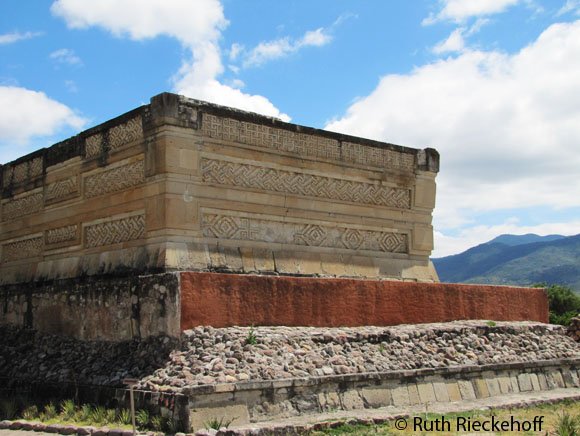
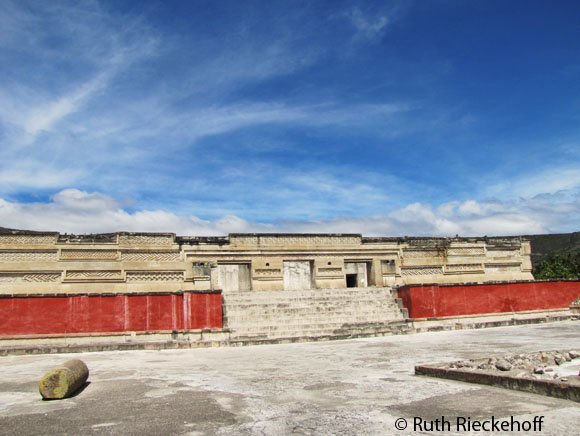


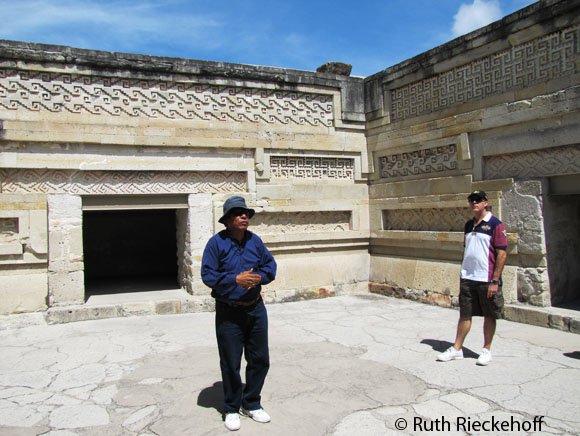
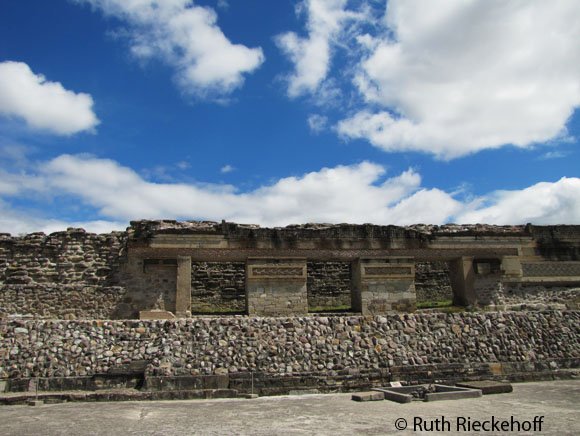
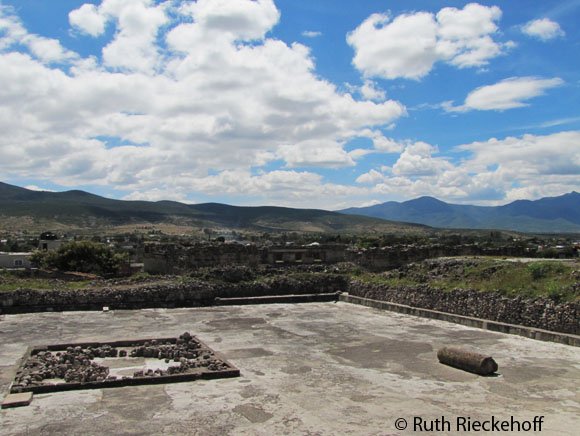
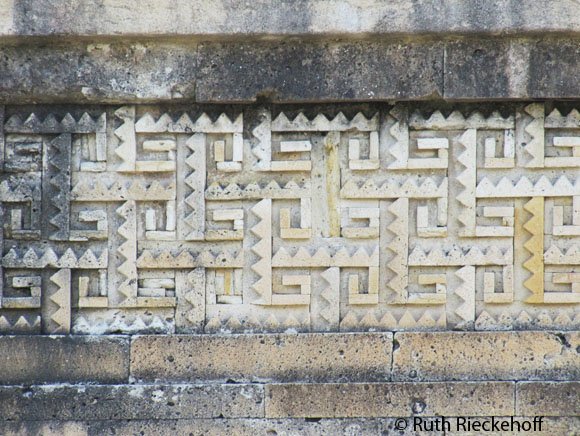
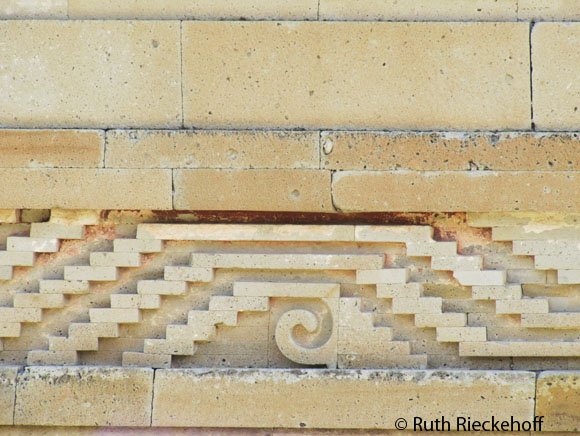
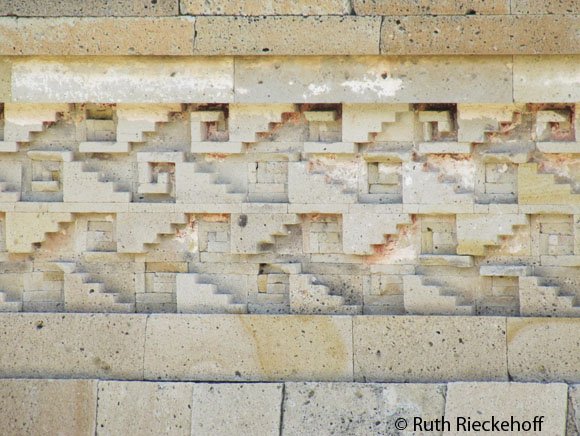
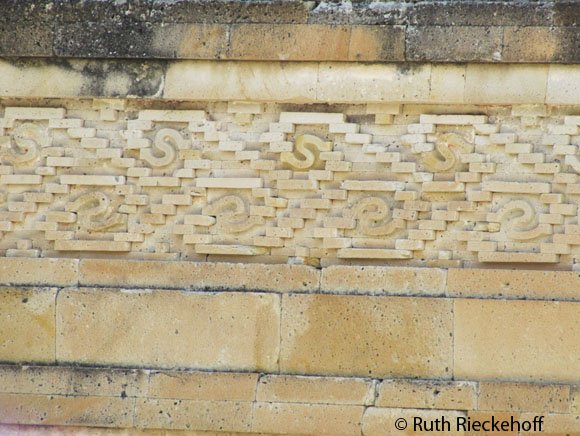

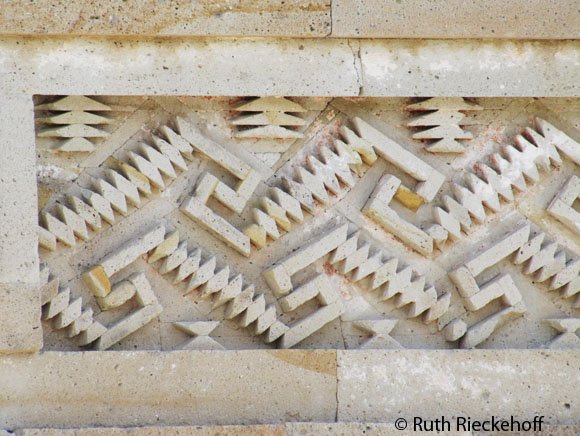
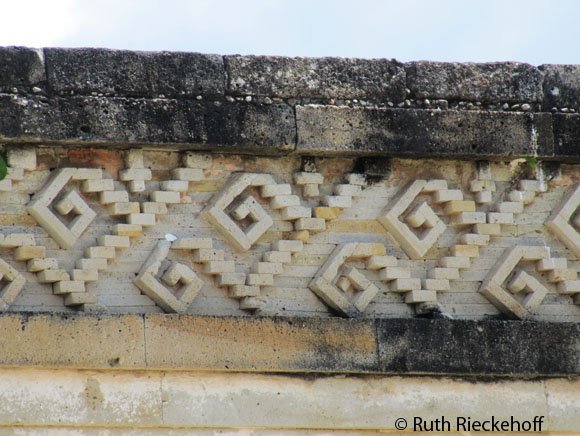



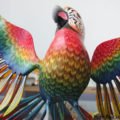


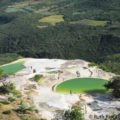
Megan @ Roamancing says
Beautiful patterns! I’d be afraid to wrap my arms around the column for fear my hands touch! Did you do it?
Ruth says
No, I didn’t wrap my arms around since it was dark and I couldn’t see the actual column very well. I fear yucky stuff all over it.
Brittany says
So informative, thanks! I did not know what mitla grecas were until reading this. Beautiful and stunning. I also admire that you share ur travels and encourage others to go out on adventures of our own.